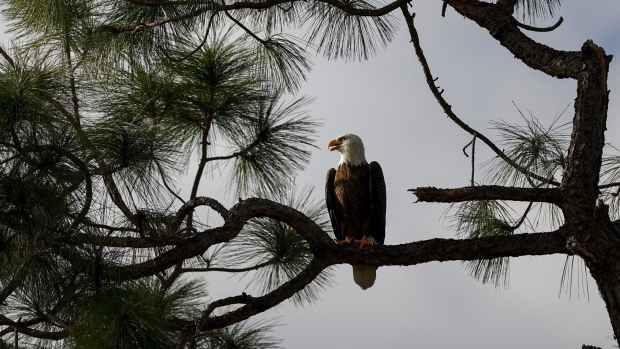Dec 19, 2023
Saving Animals From Extinction Is a Climate Strategy, Too
, Bloomberg News

(Bloomberg) -- In the late 1960s, Americans became alarmed that their national bird was at risk of extinction, due to harms including pollution, habitat loss and poisoning from the toxic pesticide DDT. It was a wake-up call that entire species were in peril from modern human expansion.
The result was that on Dec. 28, 1973, then-President Richard Nixon signed the US Endangered Species Act into law. It stipulated that if a plant or animal could be classified as endangered or threatened, officials would create and follow a science-based plan to save it, regardless of cost.
Fifty years later, 99% of the species ever listed under the ESA are still around. A few have even recovered enough to be taken off the list — including the law’s raison d’etre, the bald eagle.
Back when the law was signed, climate change was still a dark cloud on the horizon, the full extent of the coming storm understood by only a few. Yet the ESA has also been a bulwark for protecting some of the nation’s biggest carbon sinks: forests, grasslands and wetlands. That’s because legislators very much understood that protecting species is about protecting their biological environment.
Leigh Henry, director of wildlife policy and conservation at the World Wildlife Fund, says the full impact of the law is lost if you look only at the species saved from extinction, as important as that is. (For the record, there are currently more than 1,300 plants and animals listed as endangered or threatened under the law.)
“When you’re saving the species — whether it’s the spotted owl or the bald eagle or the black-footed ferret — you’re also conserving their habitat. So you’re contributing to reversing the biodiversity crisis” by protecting other species in the same ecosystem, she said. “On the climate side of things, you’re improving grasslands and forests that these species inhabit, which absorb carbon dioxide, which slows climate change effects.”
Landholders and extractive industries like timber and mining have frequently attacked the law for tying their hands and prioritizing animals over humans. But Henry says the law brings benefits to human communities such as cleaner water and air and thriving food stocks. “When opponents attack the ESA to say it’s just about a species and placing more importance on the species than people in communities, I don’t see that as the case at all,” she says. “Because there are co-benefits.”
Those co-benefits couldn’t be any more critical: The state of wildlife both within the US and globally is dire. WWF’s 2022 Living Planet Report found a decline of nearly 70% in 32,000 monitored populations of vertebrates since 1970, from birds and reptiles to tigers and elephants. The World Economic Forum estimates that $44 trillion, the equivalent of about half of global gross domestic product, is generated in industries dependent on nature, led by construction, agriculture and food.
Read More: Nature’s DNA Detectives
Collapsing ecosystems could take 2.3%, or about $2.7 trillion, off global GDP in 2030, according to the World Bank. With awareness of the biodiversity crisis rising, last year the United Nations held a summit to rally nations to protect 30% of lands and oceans by 2030.
But in the US, species protection is no longer the bipartisan issue it used to be. The Trump administration passed regulations that would force administrators to consider costs when saving species — something the ESA explicitly forbade. The Biden administration is undoing those regs, but the back and forth has not been good for animal protections, says Henry. Moreover, the agencies charged with administering the law are underfunded, conservationists say, and the backlog of species waiting to be considered grows.
And now, of course, global heating is no longer a problem on the horizon: The storm is already here. The US Department of the Interior has reported it is already seeing species endangered by climate change, such as the Mount Rainier white-tailed ptarmigan, which adapted to live on high and snowy mountaintops that are warming, and the saltmarsh sparrow, which is losing its nesting areas along the Atlantic and Gulf coasts to invasive species and rising tides.
The Biden administration has responded by proposing some new ESA regulations of its own, including one that would allow it to introduce species outside their historic habitats as a way of getting in front of global warming.
But in the end, there’s only so far up a mountain or so far inland a species can move to save itself (and that includes humans). If the last 50 years were about saving species listed as endangered, the next 50 will be about saving not just those, but everything else too.
©2023 Bloomberg L.P.


